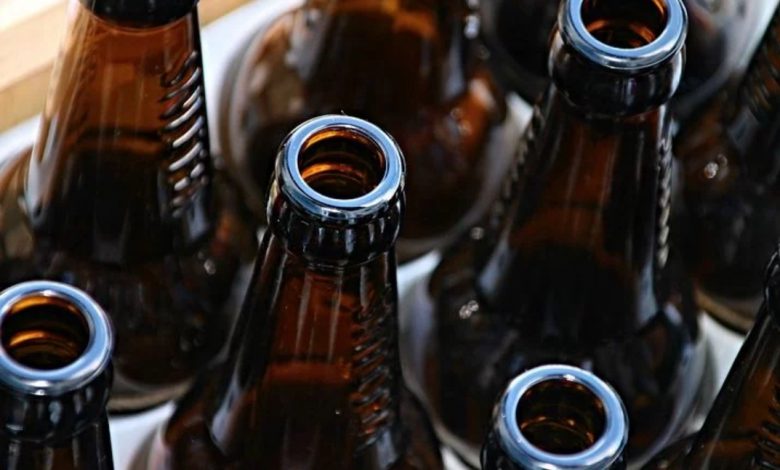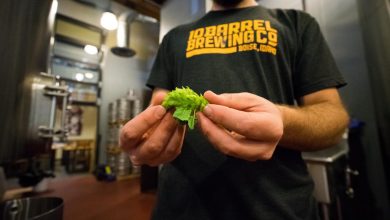Best Reusable Beer Bottles for Home Brewing

After brewing your beer at home, you need to preserve the beer using either a bottle or a can. When you drink from suitable reusable beer bottles, you derive extra satisfaction from your home brew. Before you buy bottles for use, bear in mind that not all bottles are reusable. Some bottles are designed for one-time usage only. As you start your home brewing, it’s best to buy reusable bottles for your home brew. The reusable bottles for beer are very economical and enable you to save cash.
Types of Reusable Beer Bottles You can Homebrew With
While checking out the best reusable beer bottles for your home beer, you can begin with any of the following:
Glass Long-Necked bottle
The glass long-necked bottle is a popular beer bottle. You can find it in any beer shop around your locality. This type of reusable bottle is designed with these specifications:
- Material type: Glass material
- Capacity: About 500 ml
- Height: 270 mm
- Diameter: 68.5 mm
- Color: Transparent
- Crate quantity: 12/24 bottles in each crate
- Cap: You need a bottle capper to cap this
Every beer bottle comes with different capping procedures; hence, learn the capping procedure before you proceed with your purchase. You need to have a capper before you can work with this type of bottle. When washing this bottle, you have to be extremely careful, as the bottles are liable to break if they slip from your hand and land on the hard floor.
PET Bottle
PET bottles are reusable and very durable. They also have a small bottle lid, making each one a perfect option for home brewing. A PET bottle is usually made from polyethylene terephthalate. It got its name from the material used to process it. PET bottles’ specifications are as follows:
- Material type: Polyethylene terephthalate material
- Capacity: About 740 ml
- Color: Transparent
- Crate Quantity: 12 bottles per crate
- Cap: Bottle lid
Cleaning this type of bottle is very easy when compared with other beer bottles. PET bottles can also withstand rigorous cleaning. When they fall on the floor during the cleaning process, they can still be in good condition. PET bottles are a better option when compared with glass long-neck bottles. They are transparent in a way that will allow you to monitor your beer consumption. PET bottles never allow air or sunlight to penetrate your beer. If air or sunlight enters your beer, it affects the aroma.

Glass Swing Top Bottles
Glass swing top bottles are very convenient to use. The cap is designed to be sealed by any beer maker. The cap used for a glass swing-top bottle does not require any machining process. All you have to do is place the cap on the bottle mouth, then clip the flip around the bottleneck. Glass swing-top bottles can serve as reusable beer bottles and are easy to clean. This type of bottle is great for home brewing, especially when you are planning on presenting your beer as a gift to someone. Glass swing top bottles may not be durable, as they shatter into pieces when they slip from your hand. While washing this type of bottle, you may need to apply safety measures and handle them with care. The specifications for glass swing-top bottles include:
- Material type: Glass material
- Neck width: About 26 mm
- Capacity: About 500 ml
- Color: Flint
- Crate quantity: 12 bottle crates
- Cap: Self-locking cap
Oxygen Barrier PET Bottles
Oxygen barrier PET bottles can withstand beer oxidation, thanks to their thick body design (they are thicker than a standard PET bottle). Beer oxidation is caused by the activation of oxygen in the beer content. The oxygen can appear in the form of hydroxyl and superoxide. This type of bottle is very strong, and it can survive a great fall. Oxygen barrier PET bottles are a good option for home brewing, and they can be reused after the first brewing. It also can detect carbonation in your home beer. Therefore, you can use this type of bottle to guide your beer carbonation and avoid it. When you use this type of bottle, you won’t experience bottle damage during your home brewing process. Specifications are a lot similar to PET bottles.
How to Clean Up Your Beer Bottles for Reuse
When you’re done with your first brew and have consumed the beer content stored in your beer bottles, you can decide to store the bottles for the next brew or dispose of them. If you choose to reuse, then ensure that you clean the bottle immediately after use.
If you preserve your bottles for a long time after use without cleaning, some beer particles may stick to the container that can be difficult to remove later. A dissolvent can still remove it, but it still may not be hygienic enough to reuse. To clean your bottles and get them ready for reuse, follow this procedure:
Pour the Bottles in a big Tub
Get all the empty bottles ready and pour them into a tub that is big enough to contain them all.
Add Some Cold Water and Dissolvent
You can add dissolvent to the tub. Mix the dissolvent with cold water. This dissolvent will help to soften the dried beer particles. Allow the water mixture to spend some minutes inside the bottle.
Remove the Sticker
If the bottles still have labels attached to them, peel off the labels. Allowing the labels to stick to the bottles during the process may disrupt your cleaning process.
Scrub the Inside of the Bottle
You can scrub the interior of the bottle with a bottle brush to remove all dried beer particles until no debris is left behind.
Use the Dishwasher to Sanitize the Bottle
You can start by placing the bottle upside down and shut the sanitizer. After shutting the sanitizer, adjust the settings to ensure effective cleaning. Allow the bottle to cool off before using bleach to sanitize. Use hot water to remove the bleach and allow it to cool off.

Becoming one of the most popular brands of beer takes more than having a good brew. Safe and efficient storage is also vital. Now you can go about your home brewing knowing you have the best reusable beer bottles for the task.



